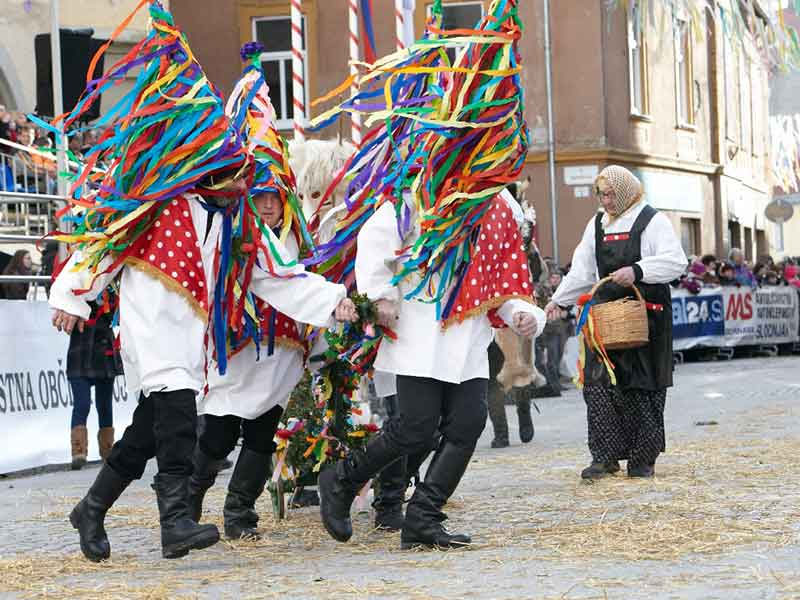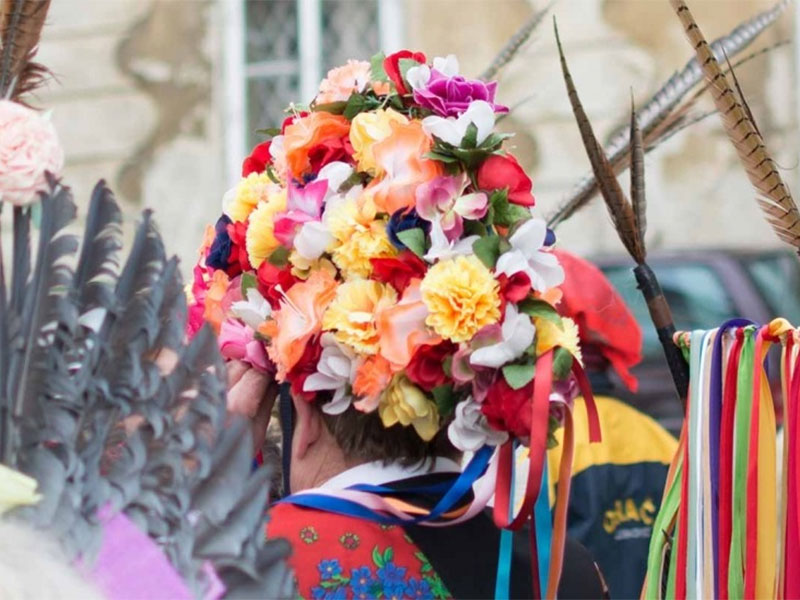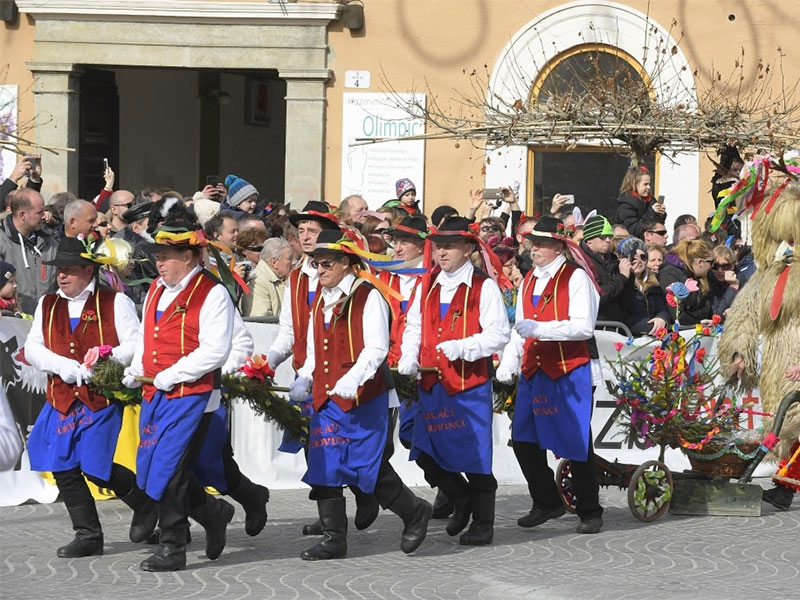Traditional Ethnographic Characters
Orači
The magical circle is outlined by ploughmen
An extremely popular carnival custom is the ploughing. The already forgotten rituals are hidden in this custom, namely the ploughing of the defensive magic circle around the village, and the solemn ploughing of the first furrow to announce the beginning of work on fields. The custom is closely related to the magic of fertility and is known everywhere where ploughing of the soil is performed. The ploughmen are known in a considerable part of Europe and in almost entire Slovenia. In the region of Ptuj, the most renowned groups of ploughmen come from villages of Markovci, Lancova Vas, Podlehnik, Leskovec, Dornava and Okič in Haloze. A group of ploughmen normally consists of three pairs of “horses” harnessed in a decorated wooden plough which is then followed by a Kurent. The “whip-cracker” chases evil spirits away with his long whip that he whirls and makes crack; at the same time he announces the arrival of ploughmen. A comic collector of donations, another figure of this collective mask, is equipped with a rake and a basket in which he carefully stores donations, especially the “fatty” ones, received from landladies. Certain groups of ploughmen, for example those from Lancova Vas, Podlehnik and Okič, are accompanied by several Kurents.
Just before the ploughmen arrive to the farmyard, one of Kurents runs to the door asking the landlord if he would allow the ploughing. Once the demand is granted, the whip-cracker cracks his whip, the ploughmen make several symbolic furrows in the farmyard and sow “fat turnips” wishing good crops. Extremely scarce are the houses where ploughmen are not welcome and given presents. But those that show no hospitality to ploughmen will inevitably face misfortune in future for Kurents roll themselves on the ground thus bringing bad luck to the house.
All groups resemble each other in number and rituals performed,but they do differ in the appearance. For example, in Markovci, the “horses” wear black trousers, a white shirt, a dark waistcoat, a blue apron and black boots. They wear hats with a kerchief which hides their faces. Those from Lancova vas wear boots, black trousers and a white shirt. Colourful kerchiefs folded in a triangle are tied to their hips and shoulders, while the most spectacular part of their outfit is undoubtedly a high semicircular head-covering decorated with multicoloured artificial flowers, greenery and ribbons. Similar head-covers are worn by ploughmen in Podlehnik and Leskovec. However, if both groups wear boots and black trousers, the ones from Podlehnik put on a white shirt and a tie, a white apron and a kerchief around shoulders and hips. On the other hand the ploughmen from Leskovec have white shirts, blue aprons and dark waistcoats with a kerchief around shoulders. The ploughmen from Okič have high conical capes with colourful paper ribbons glued onto them. They have boots, black trousers and a long white shirt hanging loose over the waist, a tie and a red kerchief with white dots put around the shoulders.
Whip-crackers of all groups wear their best clothes, boots and a decorated hat. On the contrary, collectors of donations put on old worn-out clothes and disguise themselves either as a man or a woman in which case the bosom is exaggerated. In the past few years the groups of ploughmen have had to admit in their ranks also a landlord and his lady in order to participate in carnivals where the entire ritual on the farmyard has to be performed.




 Marko Pigac
Marko Pigac Erik Školiber
Erik Školiber